Follower of Giovanni Francesco Barbieri, called Il Guercino (Cento 1591 – 1666 Bologna)
Sibyl or bust-length woman, seen in profile to the left, wearing a turban
Red chalk on paper,
23.5 x 16.5 cm
Provenance:
Private collection
This refined red chalk drawing depicts a bust-length female figure in three-quarter view, her head turned to the left and adorned with an ample turban. The restrained gesture, the softness of the volumes, and the delicacy of the modeling evoke the graphic tradition of 17th-century Bologna, particularly the stylistic universe of Giovanni Francesco Barbieri, better known as Guercino. Active in Cento, Rome, and Bologna, Guercino was one of the great masters of the Italian Baroque, renowned for his use of chiaroscuro, expressive vitality, and his exceptionally rich graphic production.
Although executed by a follower, this drawing demonstrates remarkable command of the red chalk technique, with subtle use of hatching and nuanced modeling in the rendering of both fabric and facial features. The artist remains faithful to the spirit of the Bolognese master, adopting a pose similar to those found in drawings preserved in the Royal Collection at Windsor, such as A Seated Figure of Aurora or Two Women Looking Downwards to the Right. The vibrant play of shadows and dynamic structuring of the body also recall works in the Louvre, such as Saint Joseph and the Child, or studies of young boys attributed to the School of Guercino.
The figure represented here may well be a Sibyl—a common subject in 17th-century art—often identified by her turban and introspective gaze. This is supported by the contemplative pose and the monumentality of the face. Such studies, both preparatory and autonomous, illustrate the Baroque artists’ fascination with vivid depictions of sacred or allegorical figures.
This drawing belongs firmly to the tradition of the great Bolognese school, shaped by the influence of Ludovico Carracci, yet also open to French interpretations—seen in the work of artists like Jean-Robert Ango, who copied and disseminated Guercino’s models. It stands as a fine example of Baroque draftsmanship, captivating for its freshness, balance, and finesse of execution.


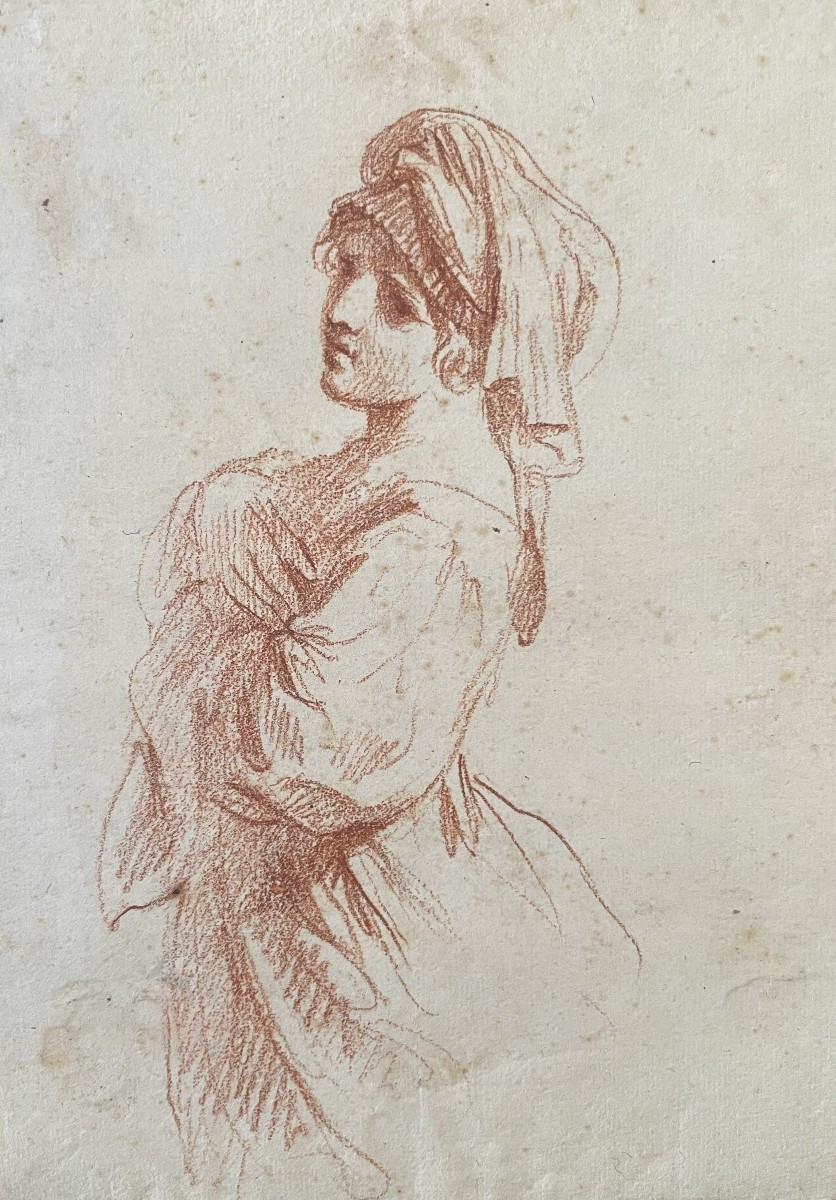
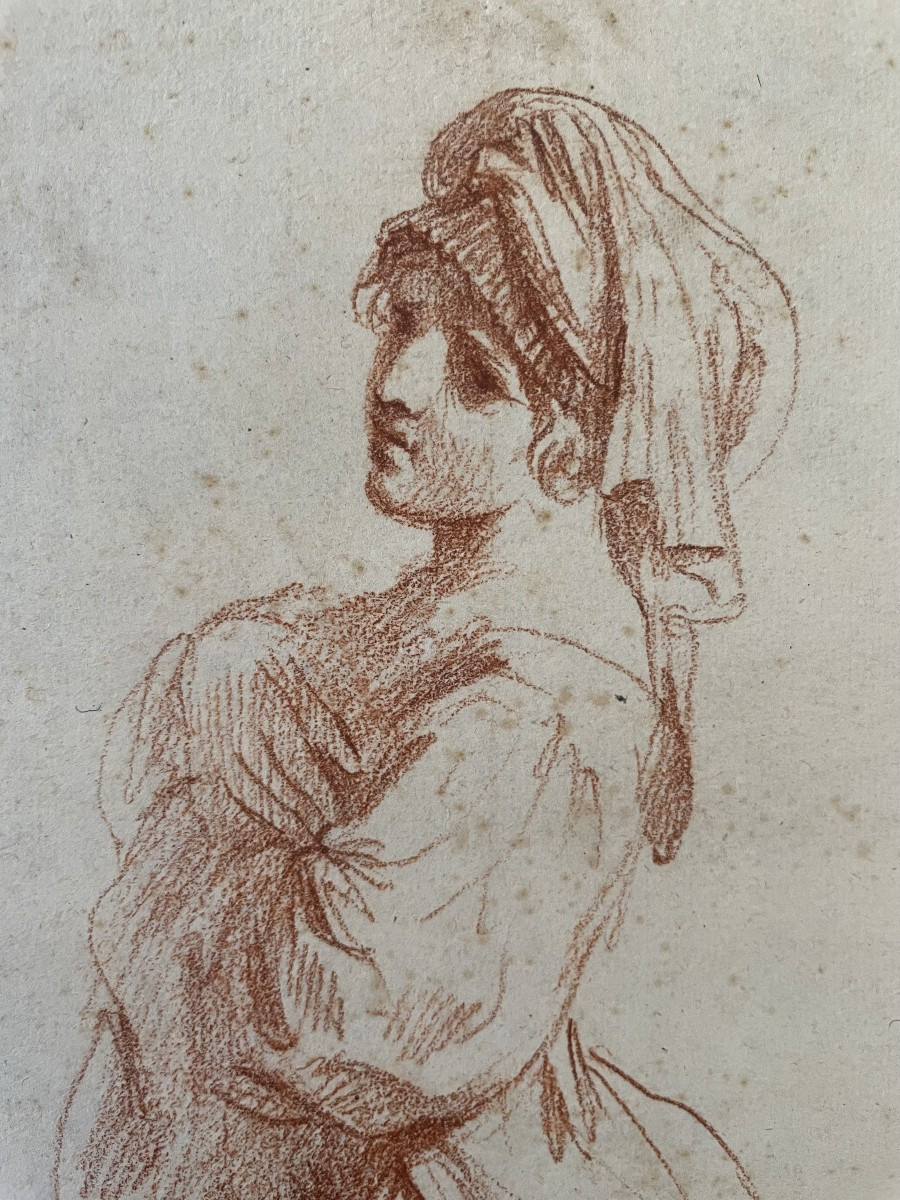
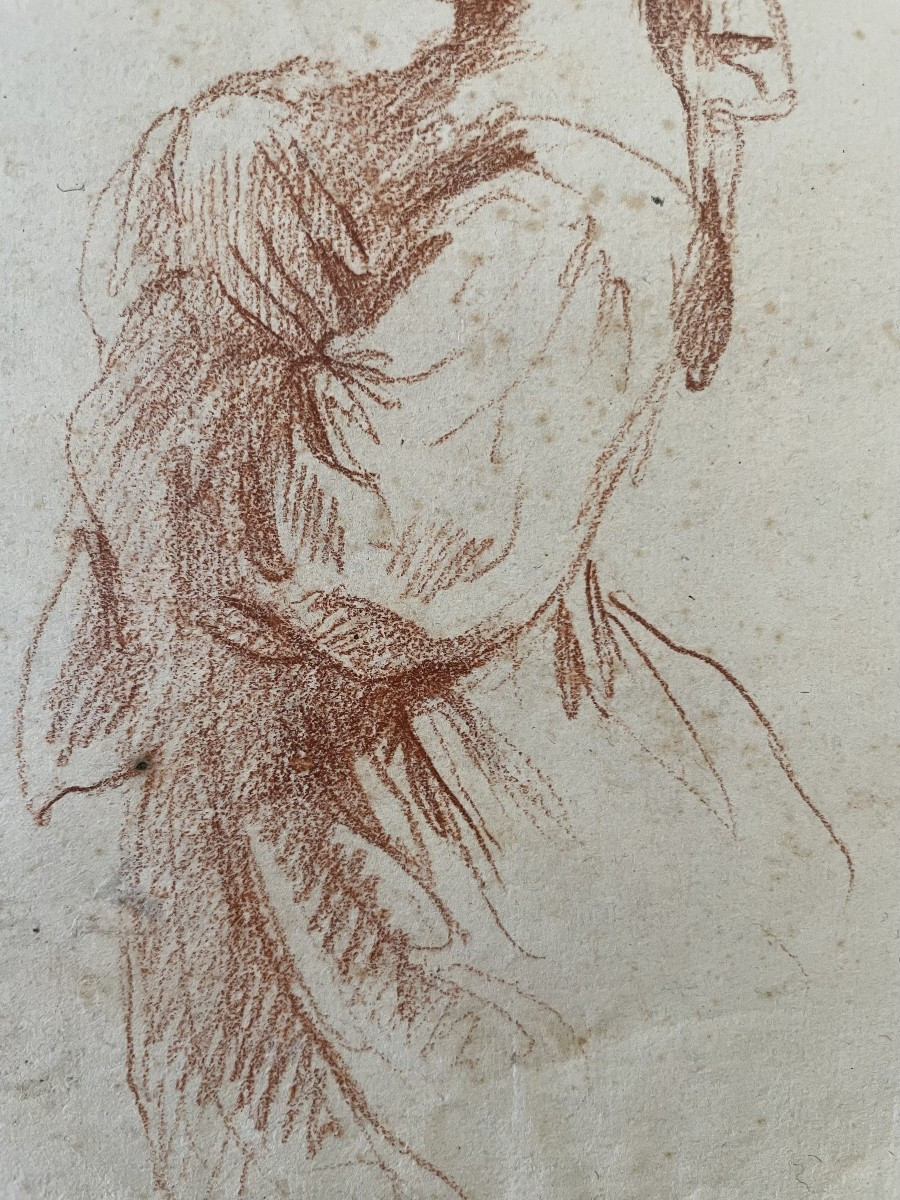
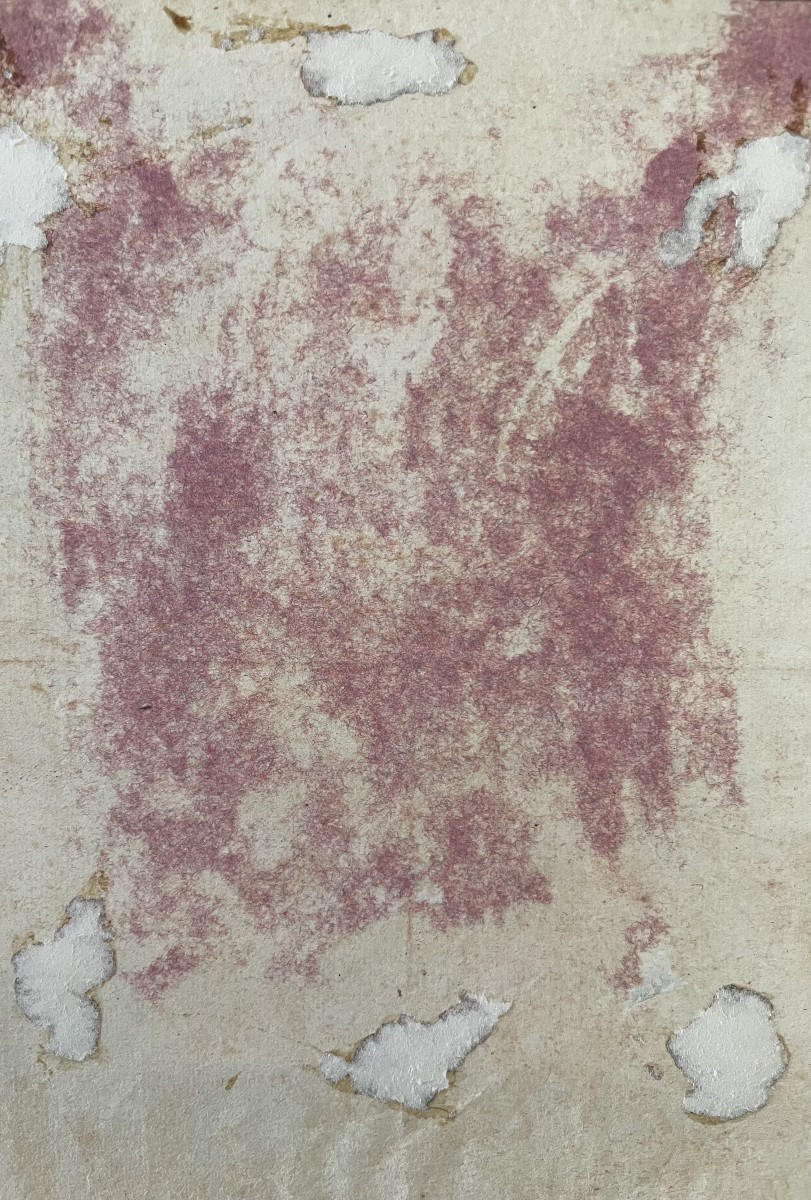
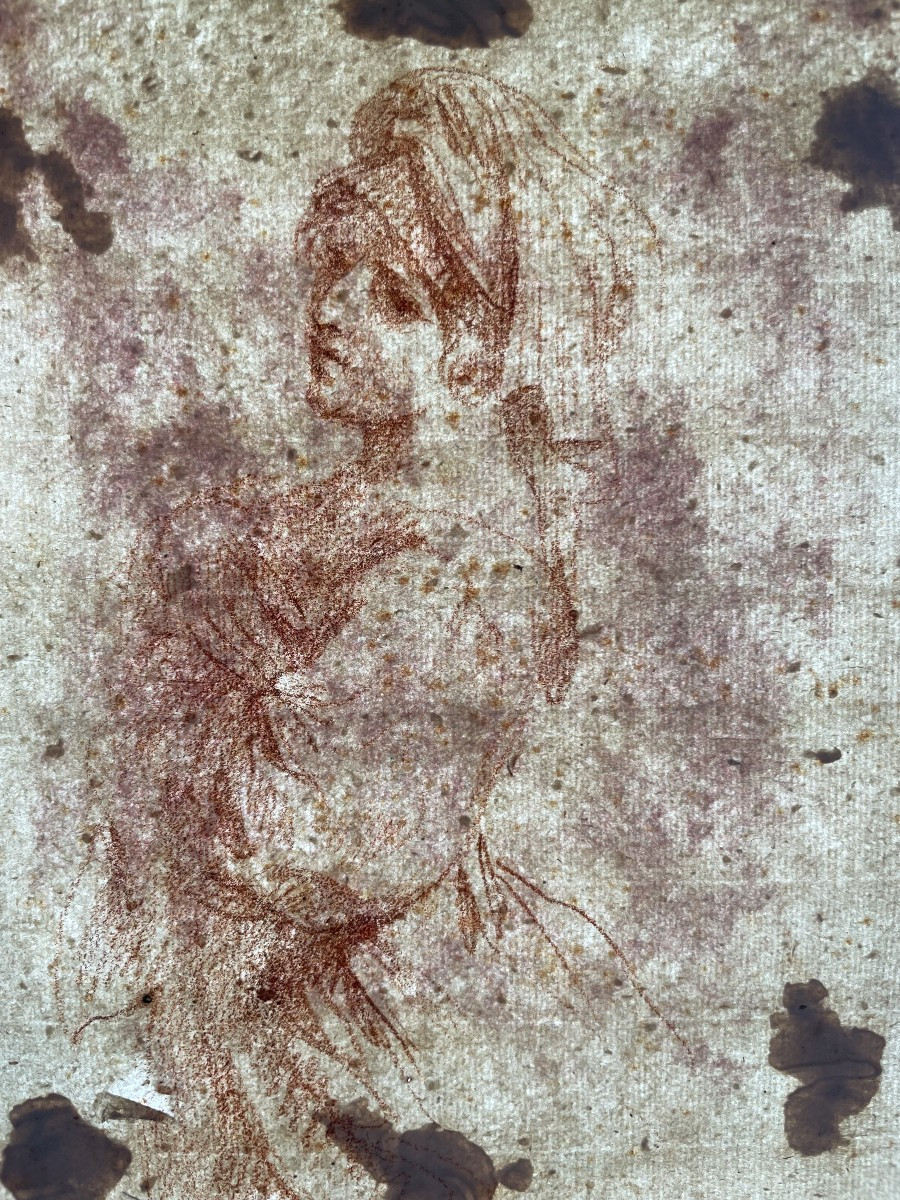






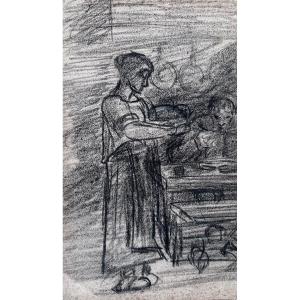



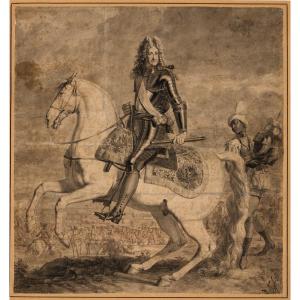





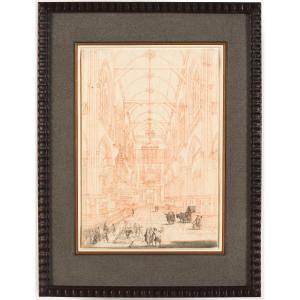
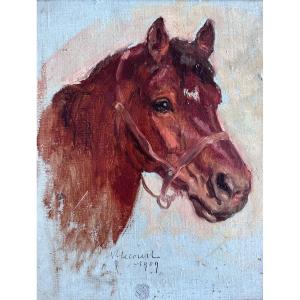











 Le Magazine de PROANTIC
Le Magazine de PROANTIC TRÉSORS Magazine
TRÉSORS Magazine Rivista Artiquariato
Rivista Artiquariato